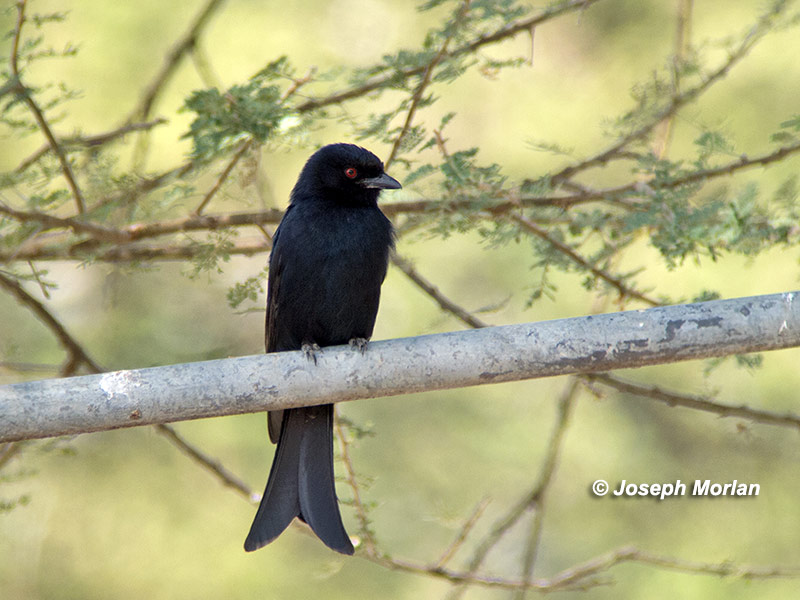

We saw this common and conspicuous species almost every day on our recent trip to Tanzania. They usually perched in the open near the tops of trees in woodlands and open arid areas. Males and females are similar, but the female's tail is said to be less forked. The red eye indicates this is an adult. Immatures have dark eyes. This species was formerly considered conspecific with Black Drongo (D. macrocercus) of Asia. They were split in 2007 by Pasquet et al. This split seems to have been widely adopted. The combined pre-split species was known as "Common Drongo" or just "Drongo."
Formerly the population in Tanzania and much of Kenya were assigned to the nominate race, D. a. adsimilis (Britton 1980, Zimmerman et al. 1996), but HBW, Clements and IOC now place all of Tanzania within the range of D. a. fugax. It is described as smaller with a more deeply forked tail. Under this taxonomy, the nominate race is confined to Southern Africa. Drongos are usually placed in their own family, the Dicruridae, although some authorities include monarchs and fantails in this group.
Reference:
Pasquet, Eric; Jean-Marc Pons;Jerome Fuchs; Corinne Cruaud & Vincent Bretagnolle (2007). "Evolutionary history and biogeography of the drongos (Dicruridae), a tropical Old World clade of corvoid passerines." Molecular Phylogenetics and Evolution 45 (1): 158–167. [PDF]
Digiscoped with Panasonic DMC-LX5 | Nikon FieldScope III | 30XWA | hand-held (no adapter).